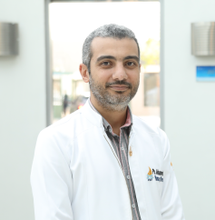
Personalised medicine, the tailoring of medical treatment to each patient's individual characteristics, is revolutionising healthcare. At the heart of this transformation lies therapeutic drug monitoring (TDM), which measures drug concentrations in patients' blood to optimise therapy and minimise adverse effects.
The clinical pharmacist or pharmacologist plays a pivotal role in the TDM laboratory, architecting personalised medication strategies. They are uniquely equipped for their role in the TDM laboratory due to their specialised training and expertise. Their in-depth knowledge of drug mechanisms, interactions, and metabolism allows them to interpret TDM data precisely and nuance. They understand how age, organ function, and concomitant medications can influence drug concentrations and therapeutic responses. This expertise enables them to make informed recommendations for dose adjustments, alternative medications, or additional monitoring, ensuring that each patient's treatment plan is safe and effective. Moreover, their understanding of clinical guidelines and best practices ensures that TDM protocols are evidence-based and aligned with the latest standards of care.
The TDM laboratory: Where science meets patient care
The TDM laboratory is a dynamic environment where cutting-edge technology and clinical expertise converge. Blood samples are analysed to determine drug concentrations, and data is interpreted to guide treatment decisions. Clinical pharmacists or pharmacologists are essential members of the TDM team, bringing their deep understanding of drug pharmacokinetics and pharmacodynamics to bear on patient care.
The clinical pharmacist/pharmacologist's role in TDM
Designing and implementing TDM protocols: Clinical pharmacists/pharmacologists are responsible for developing evidence-based TDM protocols that outline when to monitor drug levels, what target ranges to aim for, and how to interpret results. These protocols are tailored to specific patient populations and disease states, ensuring that TDM is used appropriately and effectively.
Interpreting TDM results: Interpreting TDM data requires a nuanced understanding of drug pharmacology, patient-specific factors, and clinical context. Clinical pharmacists/pharmacologists are experts in this field, able to translate raw data into actionable recommendations for dose adjustments, medication changes, or additional monitoring.
Collaborating with the healthcare team: TDM is a collaborative effort that involves physicians, nurses, laboratory technicians, and other healthcare professionals. Clinical pharmacists/pharmacologists act as liaisons, communicating TDM results to the team, providing education on drug therapy, and advocating for optimal patient care.
Educating patients and families: Patients and their families play a crucial role in the success of TDM. Clinical pharmacists/pharmacologists educate patients on the importance of TDM, explain the results, and empower them to participate actively in their treatment decisions.
Research and quality improvement: The field of TDM is constantly evolving, with new drugs and technologies emerging regularly. Clinical pharmacists/pharmacologists are at the forefront of this research, conducting studies to evaluate the effectiveness of TDM protocols, identify new applications for TDM, and improve the overall quality of patient care.
The impact of TDM on personalised medication management
TDM is a cornerstone of personalised medicine, enabling healthcare providers to tailor drug therapy to each patient's unique needs. By optimising drug dosages, TDM can improve treatment outcomes, reduce the risk of adverse effects, and enhance patient safety. This is particularly important for drugs with a narrow therapeutic index, such as those used in cancer treatment, where even slight variations in drug levels can have significant consequences.
Case study: Vancomycin in paediatric oncology
The article "Optimizing Vancomycin Therapeutic Drug Monitoring Compliance in Paediatric Oncology: Towards Personalised Medication Management" highlights the critical role of TDM in paediatric oncology, particularly for medications like vancomycin, which necessitates careful monitoring due to its narrow therapeutic index and potential for toxicity in this vulnerable population. The study's findings underscore the significant impact that clinical pharmacists can have on patient outcomes. The active involvement in designing and implementing TDM protocols, educating healthcare teams on the importance of TDM, and advocating for adherence to TDM recommendations directly contributed to the improved compliance with the vancomycin dosing recommendation observed in the study. This, in turn, led to better therapeutic outcomes and reduced adverse drug reactions, demonstrating the pharmacist's essential role in ensuring the safe and effective use of medications in the complex landscape of paediatric oncology. The study emphasises that the expertise of clinical pharmacists is not merely theoretical but translates into tangible improvements in patient care within the TDM laboratory.
Finally, as personalised medicine continues to gain momentum, the role of the clinical pharmacist/pharmacologist in the TDM laboratory will become increasingly important. Their expertise in drug therapy, data analysis, and patient education will ensure that patients receive the right drug at the correct dose at the right time.
Reference available on request

Dr. Mohamed Nagy is a Pharmacy Director, Head of Personalised Medication Management, Vice Chair of the Global PGx Committee, Pharmacogenomics Global Research Network (PGRN) and an African Pharmacogenomics Network Board Member (APN).
